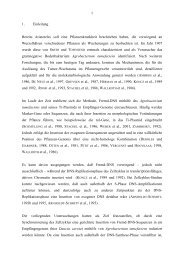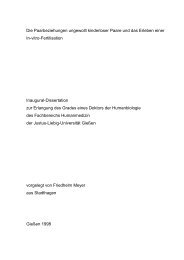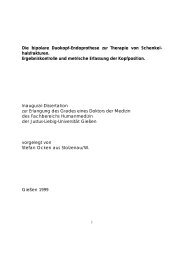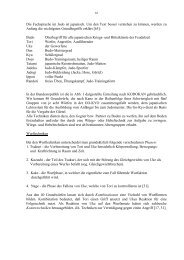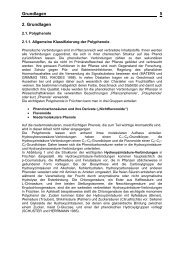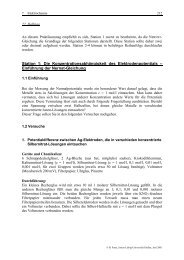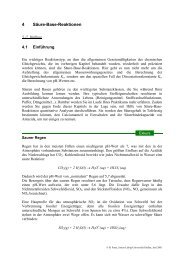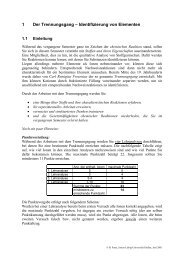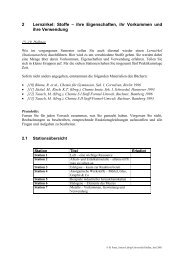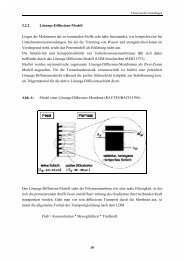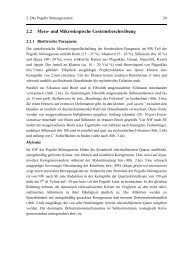Effects of diabaticity on fusion of heavy nuclei in the dinuclear model ...
Effects of diabaticity on fusion of heavy nuclei in the dinuclear model ...
Effects of diabaticity on fusion of heavy nuclei in the dinuclear model ...
You also want an ePaper? Increase the reach of your titles
YUMPU automatically turns print PDFs into web optimized ePapers that Google loves.
It will be <strong>in</strong>terest<strong>in</strong>g to study <strong>the</strong> competiti<strong>on</strong> between two possible fusi<strong>on</strong> channels. The<br />
first <strong>on</strong>e (λ—channel) describes <strong>the</strong> transiti<strong>on</strong> <str<strong>on</strong>g>of</str<strong>on</strong>g> two <strong>nuclei</strong> <strong>in</strong>to <strong>the</strong> compound nucleus with a<br />
decreas<strong>in</strong>g el<strong>on</strong>gati<strong>on</strong> and assumes a fixed mass asymmetry η dur<strong>in</strong>g <strong>the</strong> fusi<strong>on</strong>. The sec<strong>on</strong>d<br />
channel, named η—channel, describes <strong>the</strong> evoluti<strong>on</strong> <str<strong>on</strong>g>of</str<strong>on</strong>g> <strong>the</strong> DNS to <strong>the</strong> compound nucleus as a<br />
change <str<strong>on</strong>g>of</str<strong>on</strong>g> <strong>the</strong> mass asymmetry η by nucle<strong>on</strong> transfer from <strong>the</strong> light nucleus to <strong>the</strong> <strong>heavy</strong> <strong>on</strong>e<br />
at <strong>the</strong> touch<strong>in</strong>g c<strong>on</strong>figurati<strong>on</strong> <str<strong>on</strong>g>of</str<strong>on</strong>g> <strong>the</strong> <strong>nuclei</strong>. Nuclei are c<strong>on</strong>sidered as spherical with ε = 0.74<br />
which corresp<strong>on</strong>ds to realistic shapes <str<strong>on</strong>g>of</str<strong>on</strong>g> <strong>the</strong> DNS for λ =1.5—1.6. The comparis<strong>on</strong> <str<strong>on</strong>g>of</str<strong>on</strong>g> <strong>the</strong> fusi<strong>on</strong><br />
probability calculated <strong>in</strong> both channels will allow us to f<strong>in</strong>d <strong>the</strong> favorable fusi<strong>on</strong> channel.<br />
In <strong>the</strong> present chapter we will study whe<strong>the</strong>r <strong>the</strong> system has time for destroy<strong>in</strong>g <strong>the</strong> ”mem-<br />
ory” about <strong>the</strong> diabatic h<strong>in</strong>drance [35, 36]. This time is necessary to reorganize <strong>the</strong> density <str<strong>on</strong>g>of</str<strong>on</strong>g><br />
<strong>the</strong> system for <strong>the</strong> transiti<strong>on</strong> from <strong>the</strong> <strong>in</strong>itial diabatic potential V diab(λ) to <strong>the</strong> adiabatic <strong>on</strong>e<br />
V adiab(λ). The time dependence <str<strong>on</strong>g>of</str<strong>on</strong>g> <strong>the</strong> transiti<strong>on</strong> <str<strong>on</strong>g>of</str<strong>on</strong>g> <strong>the</strong> potential can be related to <strong>the</strong> effective<br />
relaxati<strong>on</strong> time τ(λ, t) [105, 106]<br />
t<br />
(λ, t) =Vdiab(λ) exp(−<br />
V<br />
0<br />
dt<br />
(λ, t) τ )+V − exp(−<br />
adiab(λ)[1<br />
t<br />
0<br />
dt<br />
τ(λ, t) )]. (6.1)<br />
A time-dependent dynamical potential V (λ, t) was orig<strong>in</strong>ally <strong>in</strong>troduced <strong>in</strong> Refs.[105, 106]<br />
from a phenomenological ansatz and applied to study <strong>the</strong> effects <str<strong>on</strong>g>of</str<strong>on</strong>g> local equilibrium <strong>in</strong> dissi-<br />
pative <strong>heavy</strong>-i<strong>on</strong> collisi<strong>on</strong>s. Eq. (6.1) may be rewritten as<br />
∆Vdiab(λ, t) =(Vdiab(λ) − Vadiab(λ)) exp(− with t <br />
V (λ, t) =V adiab(λ)+∆V diab(λ, t) (6.2)<br />
0<br />
dt<br />
τ (λ,t) ). The additi<strong>on</strong>al part ∆V diab(λ, t) can<br />
be microscopically obta<strong>in</strong>ed from <strong>the</strong> diabatic excitati<strong>on</strong> <str<strong>on</strong>g>of</str<strong>on</strong>g> particle-hole states<br />
α<br />
∆V diab(λ, t) ≈ <br />
α<br />
ɛ diab<br />
α<br />
(λ)[ndiab(λ,<br />
t) − nadiab<br />
α<br />
α (λ)], (6.3)<br />
<strong>the</strong> ɛ where diab<br />
are diabatic s<strong>in</strong>gle—particle energies as a functi<strong>on</strong> <str<strong>on</strong>g>of</str<strong>on</strong>g> <strong>the</strong> el<strong>on</strong>gati<strong>on</strong> λ <str<strong>on</strong>g>of</str<strong>on</strong>g><br />
(λ)<br />
TCSM. The adiabatic occupati<strong>on</strong> numbers n <strong>the</strong> adiab(λ)<br />
vary with λ accord<strong>in</strong>g to a Fermi<br />
α<br />
distributi<strong>on</strong> with a temperature T (λ) = E ∗ (λ)/a (a = A/12MeV −1 ), where <strong>the</strong> excitati<strong>on</strong><br />
energy E ∗ (λ) is determ<strong>in</strong>ed from total energy c<strong>on</strong>servati<strong>on</strong>. The exp<strong>on</strong>ential factor <strong>in</strong> (6.1) is<br />
83



